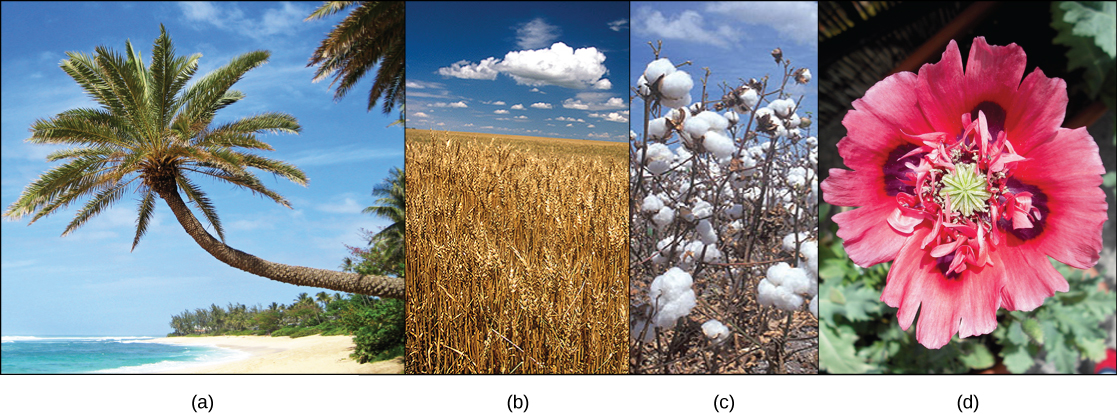Plants
Chapter 19 Introduction – Seed Plants

The lush palms on tropical shorelines do not depend on water for the dispersal of their pollen, fertilization, or the survival of the zygote—unlike mosses, liverworts, and ferns living within the same terrain. These palms are seed plants, which have broken free from the need to rely on water for their reproductive needs. The seed plants play an integral role in all aspects of life on the planet, shaping the physical terrain, influencing the climate, and maintaining life as we know it. For millennia, human societies have depended on seed plants for nutrition and medicinal compounds. Somewhat more recently, seed plants have served as a source of manufactured products such as timber and paper, dyes, and textiles. As an example, multiple uses have been found for each of the plants shown above. Palms provide materials including rattans, oils, and dates. Grains like wheat are grown to feed both human and animal populations or fermented to produce alcoholic beverages. The fruit of the cotton flower is harvested as a boll, with its fibers transformed into clothing or pulp for paper. The showy opium poppy is valued both as an ornamental flower and as a source of potent opiate compounds.

